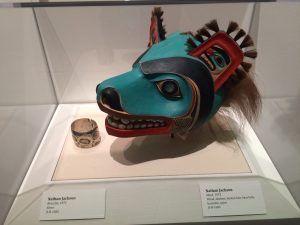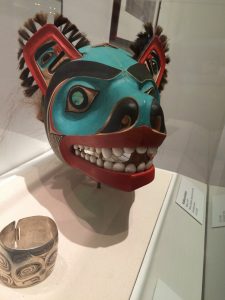After hearing the elders speak this week I have learned about the power that they feel with the connection with nature, as well as how much respect elders get. I loved hearing David talk about how the trees are the lungs of the earth, and how all people need to eat. Eating, in most cases was referred to in more of a spiritual and knowledgable way as opposed to eating physical food. I loved hearing this and I believe it really gave a good look into the his culture. The thing however, that most resonated with me was when David said that the best speech, was just the words ,”thank you”. That simple statement said so much, and is a powerful statement.
One example of culturally responsive teaching I enjoyed in the last few days was the diaper experiment. It was a great way to not only show how much one object could absorb compared to another, but it also allowed for a teaching moment in native american culture with how diapers used to be made. It also taught us one of the many things moss can be used for. The lesson we did earlier in the day with the various math problems was another example because we learned about native alaskan artwork, the animals in Alaska, and the occasional salmon berry while completing math problems. This was useful because math is a universal language, so everyone can understand it, and we learned about the area while doing the scavenger hunt too.
Some ways I could use CRT in my classroom (English) were said in the class today. I loved the idea of incorporating learning about mosses or tree leaves into poems, I thought that would be a great way to connect ideas form multiple disciplines into one cohesive unit. I also liked the idea of sitting outside in nature to write either a poem, a story, or just to describe the area. I can remember when I was a student, we would have to sit in nature sometimes and it really helped me describe nature because I felt more of a connection to it, because I was in it. Which is also something that elders kept telling us, how we should be in nature, and experiencing nature. If I was a science teacher I would use stories of the past, to explain and help the students learn about something such as the wilderness, or local wildlife. The history of the land would be a great tool to utilize in a science class in order to help teach. Such as mapping or where some books/historical events took place.
Scotts lesson:
I really enjoyed Scotts lesson because it gave us a chance to talk to each other, get to know each other a little better, and it made us think. By making us think too, it showed me what we knew and didn’t know, and how we all differed in that. For instance, one person in my group knew everything about their great grandparents, and I couldn’t even give you a first name for any of my great grand parents. However, there were other parts where I knew a lot more than other people in the group such as about the water, and the heritage of where I am from. This showed me that we all bring something different to the table, and it also showed why it is so important to talk to people and get ideas from them because we all know something different from each other.
Alberta:
While I did not get to see Alberta give her presentation, I watched Angie give an incredibly presentation on it. I loved it because it taught me a lot about having elders be invited into the classroom. I thought this was important because we need to know how to respect our resource, and how to get the class prepared. For an example, I would not have thought to bring a gift like salmon, or a jam as a gift, knowing this I definitely will now.
Ernestine:
This is a strong woman, who knows how to hold an audience. She said some very powerful words, and words that a lot of people do not like to hear. I enjoyed it because it was a way to get us to change, to get us to be the best educators that we could be for all of our students, and to help end the racial divide that occurs in schools here in Alaska. It was impossible to sit there and not take away that powerful message that she shared with us.

